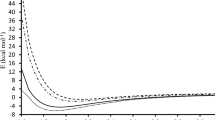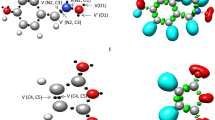Abstract
Semiempirical molecular orbital calculations have been performed for the first step in the alkaline hydrolysis of the neutral benzoylester of cocaine. Successes, failures, and limitations of these calculations are reviewed. A PM3 calculated transition state structure is compared with the PM3 calculated structure for the hapten used to induce catalytic antibodies for the hydrolysis of cocaine. Implications of these calculations for the computer–aided design of transition state analogs for the induction of catalytic antibodies are discussed.
Similar content being viewed by others
Author information
Authors and Affiliations
Corresponding author
Electronic Supplementary Material
Rights and permissions
About this article
Cite this article
Sherer, E.C., Turner, G.M., Lively, T.N. et al. A Semiempirical Transition State Structure for the First Step in the Alkaline Hydrolysis of Cocaine. Comparison between the Transition State Structure, the Phosphonate Monoester Transition State Analog, and a Newly Designed Thiophosphonate Transition State Analog. J Mol Model 2, 62–69 (1996). https://doi.org/10.1007/s0089460020062
Received:
Accepted:
Published:
Issue Date:
DOI: https://doi.org/10.1007/s0089460020062




